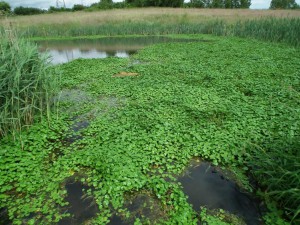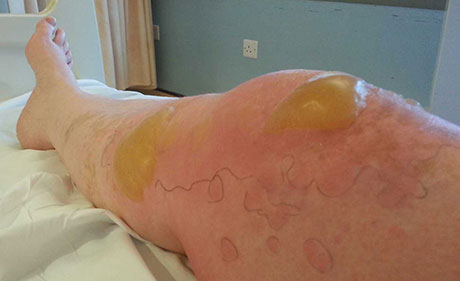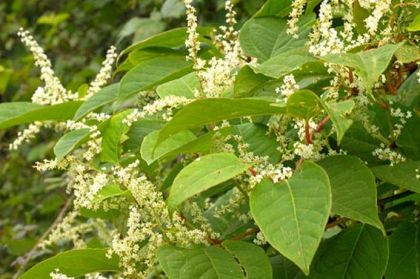
Hello, my name is Eleanor and I’m the TCV Natural Talent Invasive Non-Native Species Trainee, based at the Centre for Environmental Data and Recording (CEDaR) in Northern Ireland. As this is my first blog, I thought I’d provide some background on the organisation I’m based with; briefly explain what invasive species are and why they pose such a challenge; and give you a taste of some of the things I’ve got up to in the first two months of my traineeship.
My organisation…CEDaR
CEDaR is the local biological records centre for Northern Ireland. It is a partnership between the Northern Ireland Environment Agency (NIEA), National Museums Northern Ireland (NMNI) and the local recording community. It is responsible for facilitating the collection, management and dissemination of biodiversity data for Northern Ireland.
To date there are roughly 3.2million records on CEDaR’s database with approximately 7000 more being added each month. These biological records are used to help monitor species and habitats and inform decision making. They are therefore hugely useful and valuable; indeed, each record is estimated to be worth roughly £10.
My specialism…Invasive Species
Non-native species are species occurring outside of their natural range due either to direct or indirect introduction by humans. This introduction is often deliberate and has occurred for several millennia, with many non-native species living in harmony with native species with no adverse impacts. However, some non-native species have detrimental effects. The term ‘invasive’ is therefore used when the introduction and/or spread of a species threatens the environment, economy, or human health or lifestyle.
Ecologically, invasive species can result in the loss of native fauna and flora and the alteration of ecosystems and habitats through predation, out-competing native wildlife, and the introduction of new diseases.

Floating Pennyworth can grow up to 20cm a day forming dense stands of vegetation, outcompeting native plants and blocking out light and preventing fish accessing feeding and resting spaces.
Economically they have a huge impact, costing the British economy an estimated £1.7 billion pounds each year. These economic costs include alterations to ecosystem services, as well as the financial implication of reducing biodiversity. They can also affect other ecosystem services such as flood management, land developments (by undermining structures and the cost of clearance) and preventing and reducing access.

They also have an effect on human health and lifestyle, for example blisters resulting from Hogweed can reoccur with exposure to sunlight for up to 25 years.
The severity of the problem posed by invasive non-native species cannot be underestimated. Globally, they pose the second largest threat to biodiversity, after habitat destruction, and are the main cause of animal extinctions. It is therefore a very important and interesting topic and one I can’t wait to learn more about.
My first two months…a few highlights
Right at the beginning of my traineeship I went up to Portrush, on the North Coast, to assist with some sea buckthorn clearance. It was great to meet the TCV Coleraine team, get out of the office and get stuck into some practical invasive species clearance, particularly in such a beautiful location. The weather was glorious and the sea and sand dunes were glistening in the sunshine and I felt incredibly lucky to be paid to do something I love.
It was also a privilege to be involved in BALLYN‘AT’URE Day, which aimed to increase the local community’s engagement and enjoyment in nature. Lots of different conservation organisations attended the event, including CEDaR. I helped Anna, last year’s TCV Natural Talent entomology trainee, run bug hunts throughout the day. Despite it being a cold day the children loved getting their hands dirty and routing through the leaves to see what creepy crawlies they could find – their enthusiasm was hugely encouraging. We spoke to over 350 people throughout the day so it was a great to get some experience of community engagement and get an opportunity to promote CEDaR’s valuable work.
My foray into the word of entomology continued when I helped Catherine, the TCV training officer, deliver some training to the National Trust Educational Team down at Castle Ward (one of the locations used to film Game of Thrones) on the best way to deliver bug hunts. We talked them through different collection methods; made a flight interception trap and Pooter; and went around the site identifying good locations in which to run the activities and suggesting ways they could be improved.
I also received some training of my own. I attended an introduction to Biological Recording which aimed to encourage and enable people to make good quality records. As well covering the logistics of what constitutes a biological record and where to submit data to we went through some of the practicalities and difficulties with the different methods. I left feeling inspired and raring to get started recording and developing my specialism further.
But above all else the majority of my first two months has been spent meeting with key individuals and organisations. This included a trip down to the National Biodiversity Data Centre (NBDC), the records office for the Republic of Ireland, down in Waterford. Invasive species don’t abide by national borders, so cross-border collaboration is going to be essential. It was great to meet them, learn more about their work and discuss some potential projects.

Not only did I leave the NBDC feeling excited about potential collaborations but with some excellent resources too!
It’s been an amazing first two months and time seems to have flown by. Every day is interesting and informative and I look forward to sharing how my traineeship progresses with you over the coming months. You can also follow me on Twitter for more frequent updates.



![WP_20160227_16_06_11_Pro [89919]](https://blogs.tcv.org.uk/natural-talent/files/2016/04/WP_20160227_16_06_11_Pro-89919-168x300.jpg)
